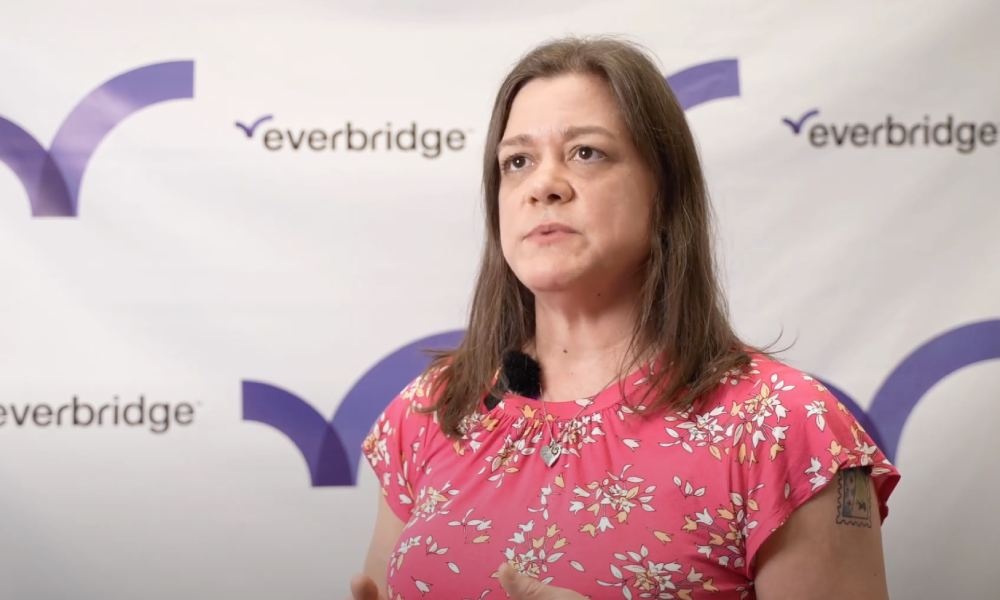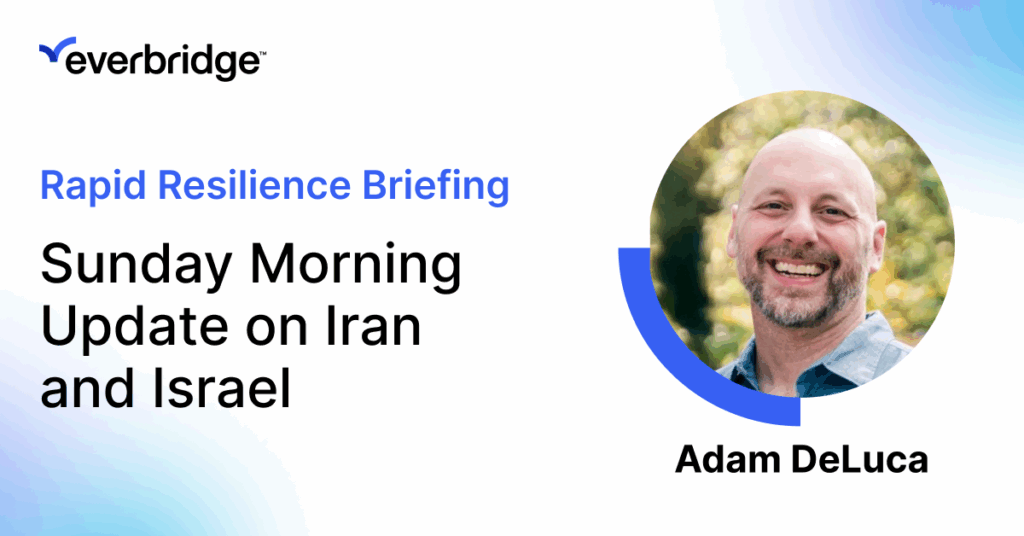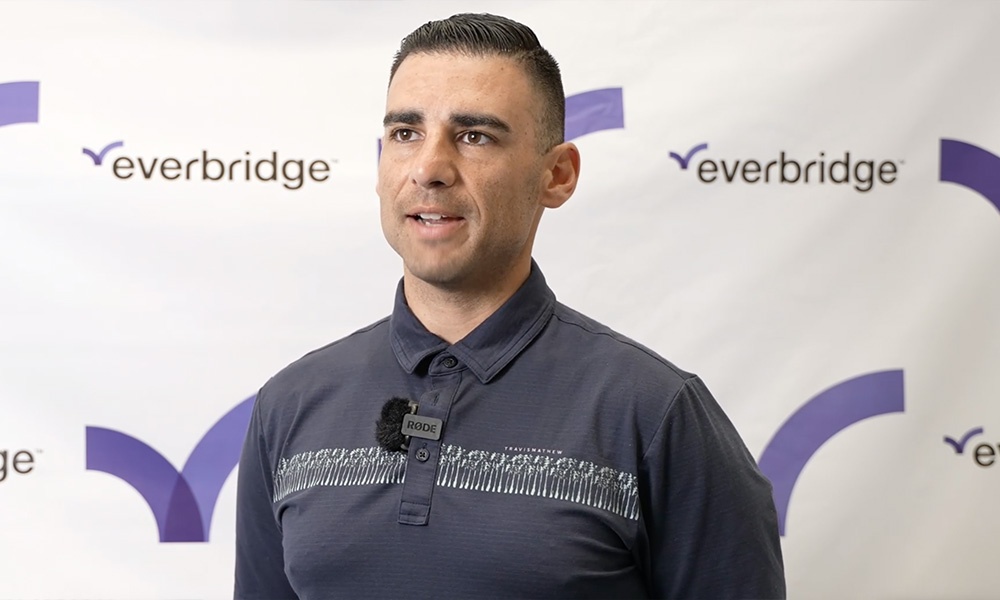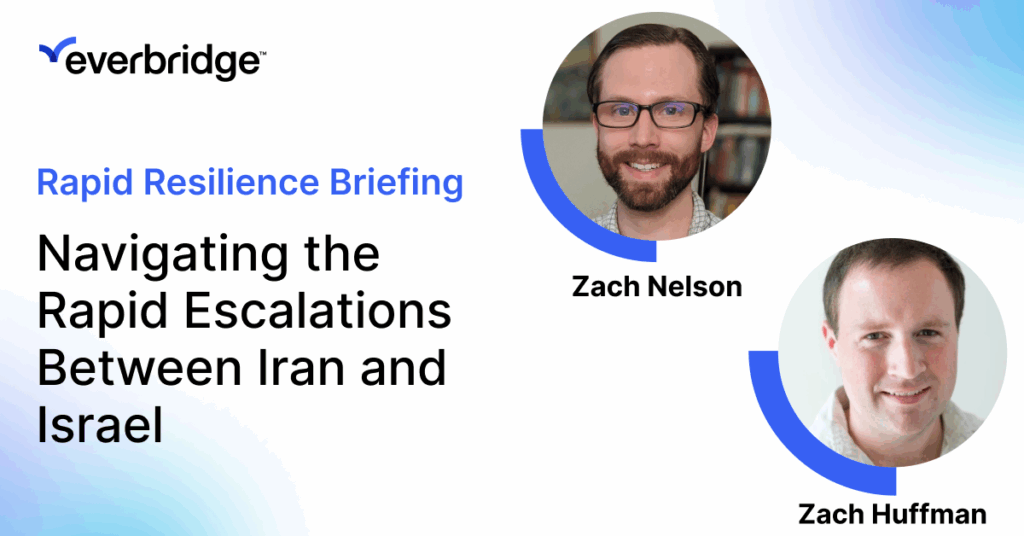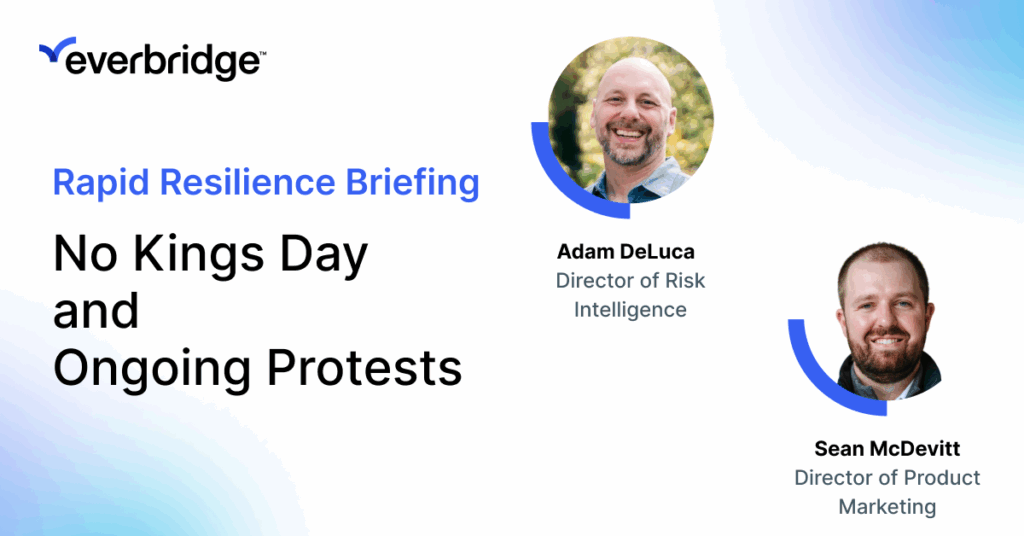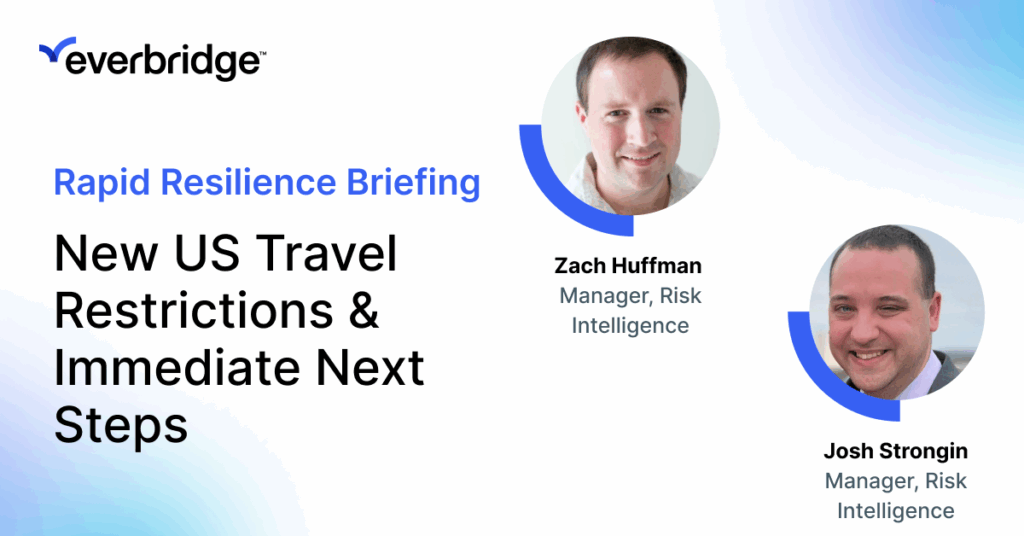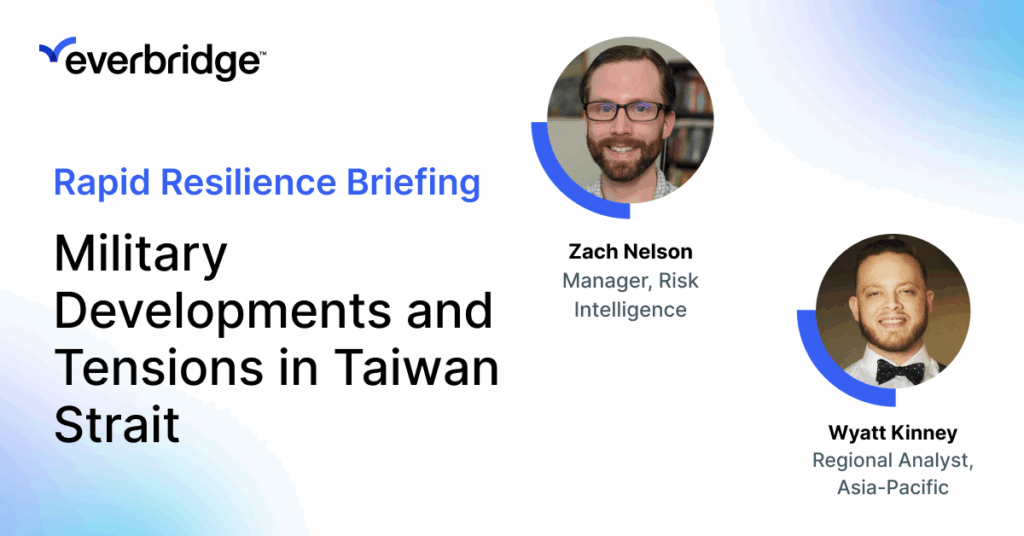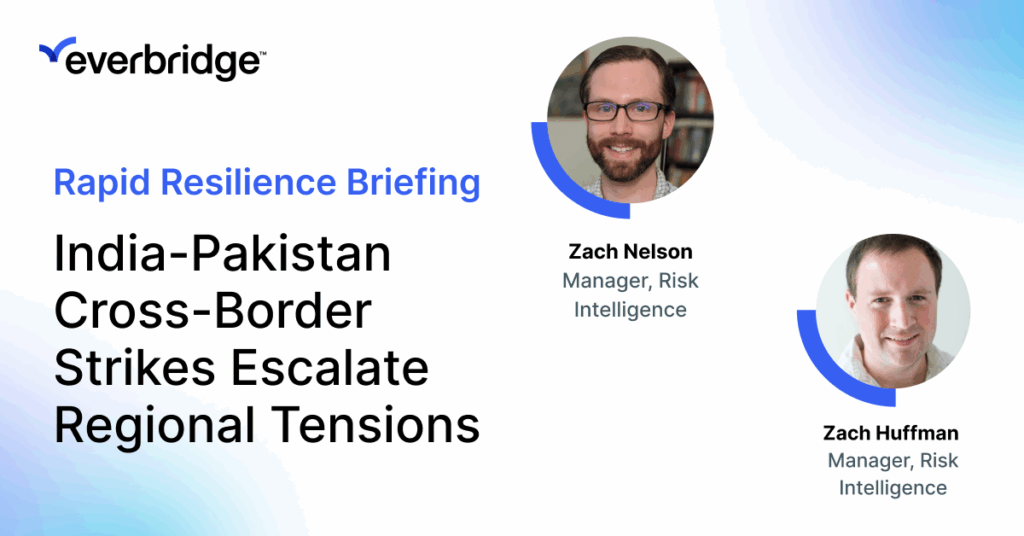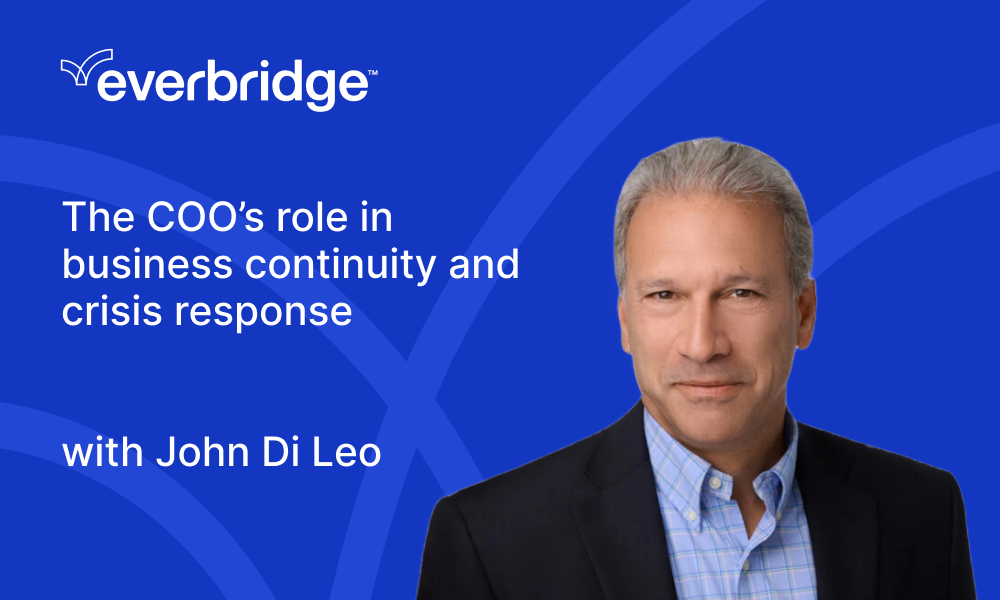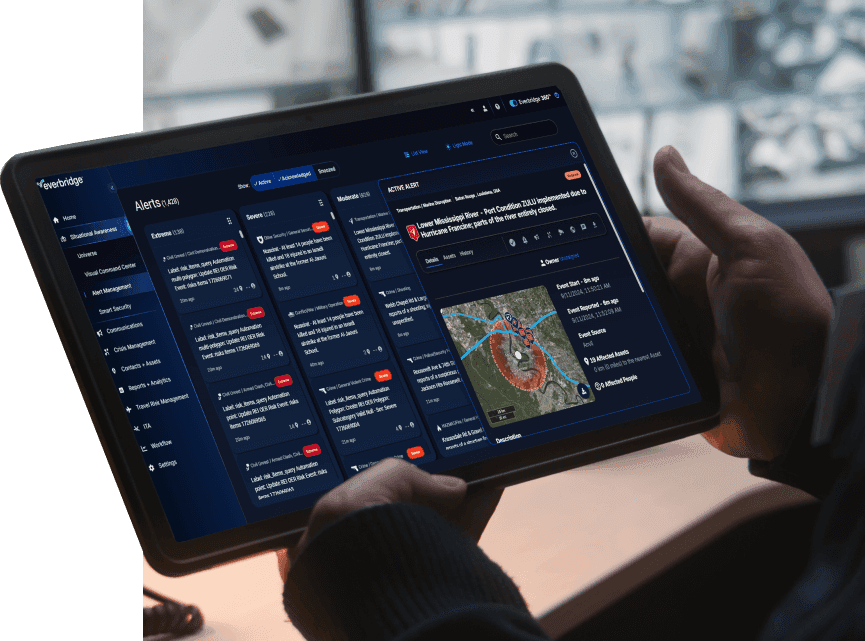Burns & McDonnell leverages Everbridge to enhance global safety and resilience by managing weather emergencies, ensuring traveler safety, and protecting their workforce and operations.
Full video transcript
[00:10.5]
We’ve used Everbridge to help us navigate critical events. Whenever we’ve had weather events that have affected our offices or some of our project and across the globe. Specifically last year with the hurricanes that were hitting in the southeast of the United States, we used Everbridge to give us a really good view of what offices are in the impact, to communicate out to our employees who are in the impact zones, and to determine which project sites we might have that would be impacted.
[00:40.5]
Using Everbridge has been really helpful for us with all of our travelers. We have a highly mobile workforce across the country and across the globe. So that really helps us feed in our traveler data, make sure that our people are safe. We’re able to notify them when they’re coming into a location or leaving a location.
[00:57.5]
It also helps us whenever we have, an actual event that’s happening message out as quickly as possible so that we can keep our people safe. I really enjoy the conference. Mostly the networking has been fantastic. Hearing how other companies are using the products. We actually use both Everbridge and BCIC, and so we’re really looking forward to the further integration of those two tools.
[01:19.0]
And so being able to network with people has been fantastic.
Discover how Bristol Myers Squibb uses Everbridge to enhance resilience and ensure patient care during critical moments. The Everbridge platform empowers their business resilience team to centralize vital information, manage key assets like clinical trials and supply chains, and respond quickly and effectively to crises.
This video highlights the innovative ways Everbridge supports Bristol Myers Squibb in safeguarding operations and making informed decisions that prioritize patient well-being. From targeted communication to real-time asset visualization, see how their team ensures continuity and care in the face of disruption.
Full video transcript
[00:07.3] Everbridge helps us stay resilient by bringing so many, pieces of information that we have, our sources of truth, so to speak, into one central repository. I think that’s huge for us to be able to have one single pane of glass. To be able to see all of our assets, not just our buildings and people, but also we’re in pharmaceuticals, so clinical trials, cell therapy sites, our supply chain.
[00:35.3] So when the crisis event does happen, we can look at that, provide our leadership with a high level view, and quickly gain an understanding of how we could be impacted by the event and start to plan quickly of how we’re going to recover from that and get back to normal operations.
[00:53.4] One time that specifically stands out for me was not a big thing, but where having Everbridge was critical and helped us quickly assess the situation was the attack on Israel, October 7.
[01:10.3] We were able to, we don’t have a lot of assets there, but we do have a site, we have a business critical partner, we have a clinical trials in Israel. And the team, the critical, the business resilience team, was able to come to me and ask, what, what do we have?
[01:27.7] You know, and one comment they had was, well, we don’t have any critical trials anywhere near there. Or I’m sorry, clinical trial. And within a minute I was able to, you know, not only tell them where it was, but also give them a visual of exactly, you know, how close it was to the Gaza Strip, so that they could take action to make sure that our patients were able to continue getting the treatment and the care that they needed.
[01:52.8] We’ve had Everbridge for five years now and it completely changed the way that we handle critical events. We had a system that really was just for communication. And when we changed over to Everbridge to be able to not just have an updated list of people or sites, we’re able to actually place them in relation to crises or critical events or risks and be able to then quickly notify people. Based on, based on, their potential impact from that, rather than just taking a fire hose approach and is something going to happen in a certain state, we were able to actually target the people that needed to know.
[02:44.5] So it not only helps them by getting critical information in a timely manner that’s accurate, but also helps us by not over communicating to the people that aren’t impacted by it. So I think it’s helped us to help our people understand and feel confident that they’re going to get information that the company is supporting them, but also to help reinforce to them that the information you do get is important, and not just click past an email or ignore a phone call, but that it’s going to be relevant to them.
Join Adam DeLuca for a weekend update about the situation in Iran and Israel after weekend bombings occurred.
APL Logistics is an international logistics organization responsible for ensuring the safety of its people and assets across the globe. In this interview with Tony Chavez, their Director of Security, he discusses how Everbridge helps APL effectively manage critical events from start to finish.
Full video transcript
[00:07.3]
Our organization is an international logistics organization, and we have several risks, going on at any time around the globe. And a system like Everbridge helps us really manage critical events from start to finish. It allows us to become aware of specific risk events that are impactful to our business in a quick and efficient manner and allows us to mitigate risks as they come up to help minimize, the damage for our business operations.
[00:32.5]
A few months ago in the California wildfires, a large contingent of our workforce in the United States is remote, and we actually had, nine employees within not only the fire zone, but within the actual evacuation zone, and it really helped us, give context to the event as far as what impact or what assets were impacted by the event, and helped us manage our employees, facilitate their evacuation and further follow up as, we needed with HR and the different business units that needed to be involved with real time intelligence so that we could act accordingly with the best information on hand at any given time.
[01:08.1]
Yeah, so prior to bringing Everbridge on, we really had no automated way to, connect our assets to a particular risk event. So oftentimes it was me, getting open source intelligence through open source intelligence platforms, and then looking at our HR system and going into, you know, like a Google Maps type thing manually for each individual employee and trying to connect a specific coordinate to that event.
[01:36.7]
But it took, you know, literally what took two hours before, can now be done within a matter of seconds, and we can get the communication out to the folks who are impacted and provide our executive staff with a really quick summary of what impact the specific risk event has, on not only our facilities and operations, but also our people as well.
[01:58.0]
Our team is very, lean by design, and with Everbridge, we’ve been able to utilize the CEM orchestration and workflows very heavily within our environment to really automate a lot of the response processes and get our response going immediately once an event kicks off.
[02:13.6]
And that’s really allowed us to become very efficient, and again, manage the disruptions to any of our operations or impacts on our assets or people. Say, you know, a lot of times the, especially in the industry that I’m in, I’m the Head of Security for the organization and the traditional mindset has been to kind of throw personnel, you know, at problems and really continue those manual processes.
[02:37.4]
What I would say is look to tools like Everbridge to automate as many processes as you can to make your current workforce not only more capable, but more efficient. And with that you can also add capabilities to your program that you probably never imagined because you’re able to free up a lot of the manual workloads that your employees were doing prior to implementation.
[02:56.8]
And then the other piece, that I would add to that is try to incorporate as much data as you can, so not only Everbridge data, but also integrate your own data to give you more context around the impact that specific events are having. Not only your facilities, productivity, but also a financial impact as well.
[03:14.9]
If you can connect it to like your SAP type system or whatever system you use for finances as well. It’s been very impactful to see not only the effect on our current operations, but the financial impact that it could have long term as well.
Join Zach Nelson and Zach Huffman, as they discuss the latest updates on the ongoing tensions between Iran and Israel.
Join Sean and Adam as they unpack the emerging risk landscape, including No Kings Day, military parade in Washington, and ongoing protests in LA.
Join Zachary Huffman and Josh Strongin where they discuss the latest US travel restrictions set to come into effect on June 9.
In our latest Rapid Resilience Briefing, Zachary Nelson and Wyatt Kinney discuss the latest military developments and rising tensions in Taiwan Strait.
We discuss the continuing escalations in the Kashmir region between India and Pakistan, with both countries reporting civilian injuries and casualties.
How do you lead with confidence in a world of constant disruption?
In this video, John Di Leo, Chief Operating Officer at Everbridge, shares practical advice on how organizations can strengthen operational resilience without sacrificing efficiency. From automation and stress testing to leadership discipline and team training, John explains what it takes to make sure business doesn’t slow down when high velocity disruptions happen.
Resilience isn’t about predicting every crisis. It’s about being ready for whatever comes next.
Learn more about how Everbridge helps organizations build stronger, more adaptable operations, powered by decision-ready intelligence and purpose-built technology, by requesting a demo of High Velocity CEM today.
